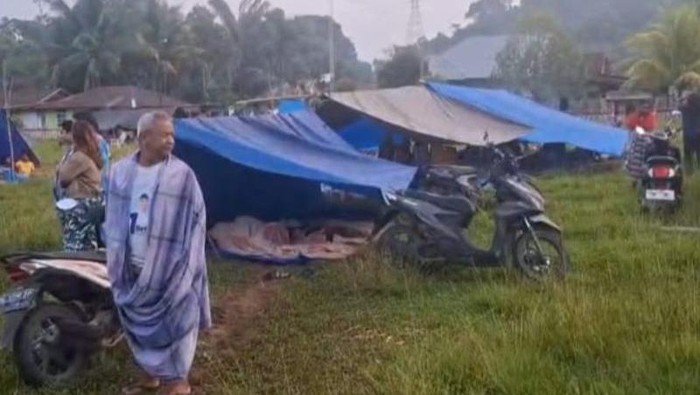Poso, Central Sulawesi — A powerful shallow earthquake struck Poso Regency late Thursday night (July 25, 2025), damaging more than 100 homes and displacing over 2,000 residents, according to local disaster management officials.
Epicenter in Active Fault Zone Triggers Aftershocks
Initially recorded at magnitude 6.0, the quake was later revised to 5.7 by the Meteorology, Climatology, and Geophysics Agency (BMKG). It originated from the seismically active Poso Fault Zone at a shallow depth, intensifying its impact.
“Residents remain in evacuation shelters due to persistent aftershocks,” said Akris Fattah Yunus, Head of Central Sulawesi’s BPBD, as quoted by detikSulsel.
Tokilo and Tindoli Villages Bear the Brunt
Damage assessments confirmed widespread destruction in Pamona Tenggara District:
-
Tokilo Village: 4 homes severely damaged, 21 lightly damaged; 184 households (596 people) evacuated
-
Tindoli Village: 10 homes heavily damaged, 70 lightly damaged; a church and kindergarten structurally affected; 887 residents displaced
Minor injuries were also reported in Tindoli and Tolambo, while Pendolo Village in Pamona Selatan saw at least one lightly damaged home.
Scientific Analysis: Shallow Strike-Slip Movement
BMKG’s analysis confirmed a strike-slip earthquake, where tectonic plates shift horizontally. Its shallow depth amplified ground shaking across Poso, Kolonodale, and Mangkutana—reaching intensity levels of IV–V MMI, strong enough to jolt furniture and disturb residents at night.
“This event underscores the ongoing seismic risk in the Poso Fault area,” said Daryono, BMKG’s Director of Earthquake and Tsunami Center.
Ongoing Relief Operations
Disaster response teams are currently:
-
Conducting structural assessments
-
Distributing emergency aid
-
Monitoring aftershocks that continue to unsettle local communities
The quake is a reminder of Indonesia’s deep seismic vulnerability—especially in remote, fault-prone regions with limited infrastructure.
Why This Matters:
This event highlights Indonesia’s vulnerability to shallow crustal quakes—often more destructive than deeper tremors of similar magnitude. With thousands still displaced, the focus now shifts to both immediate aid and long-term seismic resilience in Central Sulawesi’s fault-prone regions.
Giostanovlatto – Bali Today





